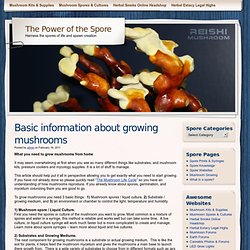

Certified Organic Quinoa Seeds for Organic Vegetable Growing - West Coast Seeds. Heritage and Heirloom Seed Catalog for Organic Gardeners. Growing Amaranth and Quinoa. Recipes There are so many similarities between quinoa (keen' wah) and amaranth that it seems appropriate to describe them together.

Quinoa, however, is a cool weather crop and amaranth is a warm weather one. Quinoa and amaranth are two very old, high-protein plants that hail from South America. They were held sacred in ancient Inca and Aztec cultures. Both now hold great potential for self-sustaining gardens in the northern hemisphere. Quinoa and amaranth are treated as grains although they have broad leaves, unlike the true grains and corn, which are grasses. Both quinoa and amaranth are quite adaptable, disease-free and drought-tolerant plants. The wild relatives of both amaranth and quinoa have long been familiar to North American gardeners and are often called by the same name of pigweed.
Most cultivars of amaranth and quinoa grow four- to eight-feet high and, when in flower, are majestic plants whose presence emits a special radiance in any garden. Soil Preference Varieties Sowing. Basic information about growing mushrooms. What you need to grow mushrooms from home It may seem overwhelming at first when you see so many different things like substrates, and mushroom kits, pressure cookers and mycology supplies.

It is a lot of stuff to manage. This article should help put it all in perspective allowing you to get exactly what you need to start growing. If you have not already done so please quickly read “The Mushroom Life Cycle” so you have an understanding of how mushrooms reproduce. If you already know about spores, germination, and mycelium colonizing them you are good to go. To grow mushrooms you need 3 basic things: 1) Mushroom spores / liquid culture, 2) Substrate / growing mediuim, and 3) an environment or chamber to control the light, temperature and humidity. 1) Mushroom spore / Liquid Culture.First you need the spores or culture of the mushroom you want to grow. 2) Substrates and Growing Mediums. The next component for growing mushrooms is a substrate or actual growing medium. 3) The Growing Chamber. Mushroom Cultivation Plugs. The commercial outdoor grower has used mushroom plugs for many years.

Now the MUSHROOM MAN brings it home to you! Log cultivation is usually done with logs 4 - 6 inches in diameter with a length of 3 to 4 feet. Oak is particularly good for the cultivation of most mushrooms though many other species work well also: poplar, aspen, sugar maple, willow, alder and birch, among others. Instructions Mushroom Log Inoculation Log cultivation is usually done with logs 4 to 6 inches in diameter with a length of 3 to 4 feet. To select the appropriate trees for the cultivation of different gourmet mushrooms, refer to the tree selection guide on the back of this sheet.
You can usually begin to inoculate logs one month before the average last frost date as long as day-time temperatures are above 40o F. Each log usually produces 2.5 lb - 4 lb over its lifetime. Log Maintenance It is very important to take care of your logs while they are colonizing or resting in between fruitings. Tree Selection Guide. Mushroom Cultivation: Shiitake, Oyster, Reishi & Kombucha. Fungi Perfecti: the finest mushroom products for home and garden, farm and forest, people and planet.